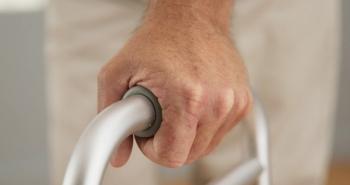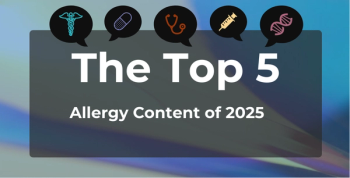
Unraveling the Physical, Mental Health Impacts of 9/11, 2 Decades Later: Part 1
In part 1 of a 2-part series, we look at the current physical and mental health risks first responders and survivors of the 9/11 attacks continue to face, as well as unmet needs that may warrant future intervention.
The September 11 attacks continue to have an enduring impact on the physical and mental health of Americans nationwide.
Within a month of the rescue and recovery effort that followed the WTC attacks, responders began presenting with a myriad of respiratory complaints at Mount Sinai’s Irving J. Selikoff Center for Occupational and Environmental Medicine.
But the list of ailments triggered by the toxic cloud—where thousands worked for months on what became known as "the pile" to recover those who perished—
“Previous studies have found that the WTC dust contained toxins such as asbestos and lead, as well as other components such as pulverized cement, glass fibers, and other particulates,” said Artit Jirapatnakul, PhD, assistant professor, Diagnostic, Molecular, and Interventional Radiology, Icahn School of Medicine, Mount Sinai, in an email exchange with The American Journal of Managed Care® (AJMC®).
Becoming what is today known as the
Exploring Physical Health Risks Linked With First Responders
In distinguishing risk posed to first responders, a recent
Evaluating 1788 WTC responders, categorized by time of arrival, 14.4% overall had liver attenuation, a marker of hepatic steatosis or excessive fat in the liver, with Hounsfield units (HU) less than 40 identified on their earliest CT. Notably, significantly lower liver attenuation was found most prominently among responders who arrived earlier:
- 17.0% of September 11 arrivals (n = 642)
- 16.0% of September 12-13 arrivals (n = 532)
- 10.9% of September 14-30 arrivals (n = 448)
- 9.0% of October or later arrivals (n = 166)
“This accumulation of excessive fat is an indicator of liver injury, which may lead to and/or accompany other features of liver disease that in combination can progress to cirrhosis and liver cancer; liver cancer is responsible for over 30,000 deaths each year in the US,” said Jirapatnakul.
Discussing the study findings, Jirapatnakul noted that it adds to prior research by his group which found a 3 times greater risk of hepatic steatosis in responders to the WTC attacks, compared with a similar group of lung cancer screening participants without WTC exposures.
“These new findings build upon previous research by showing that not only is there a link between increased risk of hepatic steatosis, but this risk also increases with the amount of exposure.”
Delving further into the association between risk and exposure, another
With those who arrived earlier exposed to more intense toxins, findings of the covariate-adjusted analyses, which also assessed impact of dust cloud exposure, indicated that male early responders were at 1.4 and 1.43 times greater risk of developing CVD, with and without dust cloud exposure, respectively. Women had even higher risk, at 2.16 and 1.59 times with dust exposure.
Speaking with AJMC®, study authors Nancy L. Sloan, DrPH, senior epidemiologist, WTCHP General Responder Data Center, Mount Sinai, and Andrew C. Todd, Ph.D, director, WTCHP General Responder Data Center, Mount Sinai, noted that the results were consistent with observations found among WTC-exposed New York City firefighters, with women also shown to be at significantly greater risk than men.
“We also found elevated CVD risk in the general responder cohort may also be occurring at a substantially younger age than in the general population,” they said via email.
Unmet Needs in Physical Health Research, Preventive Care for WTC First Responders
As these risks continue to be explored, the future physical and economic burden of toxin exposure may prove to be a notable concern as these populations age.
Beyond the magnitude or type of exposure, a 2019
“For cancer, more prolonged follow-up is needed, in our opinion, because of the latency period of many cancers,” said Sloan and Todd.
As for CVD, they noted that their research team is currently investigating the associations of WTC exposure with heart attack and stroke, as well as associations of WTC-certified conditions, functionality, and quality of life. “We have also recently conducted associations of WTC exposures and autoimmune conditions (under peer review) and medication use, and will continue to conduct assessments of morbidity, hospitalization, and death,” they added.
Furthermore, there remains no current protocol to monitor at-risk WTC responders for liver disease. In addressing this concern, Jirapatnakul said in an email that a future screening procedure for these populations may leverage a process used by his research team. In chest CT scans used for lung cancer screening, a small portion of the liver is often visible—enough so that the existing scans can be used to screen for excessive liver fat without any additional procedures or tests.
“As responders already qualify for annual lung cancer screening, we can utilize the same scan to examine liver fat, and if a responder is found to have excessive liver fat, we can refer them to a hepatologist for additional follow-up,“ said Jirapatnakul. “Our next step is to look into whether responders with excessive liver fat also have increased liver scarring–there is further work to be done to determine the long-term effects of WTC exposure and to continue to treat WTC responders.”
Newsletter
Stay ahead of policy, cost, and value—subscribe to AJMC for expert insights at the intersection of clinical care and health economics.







































